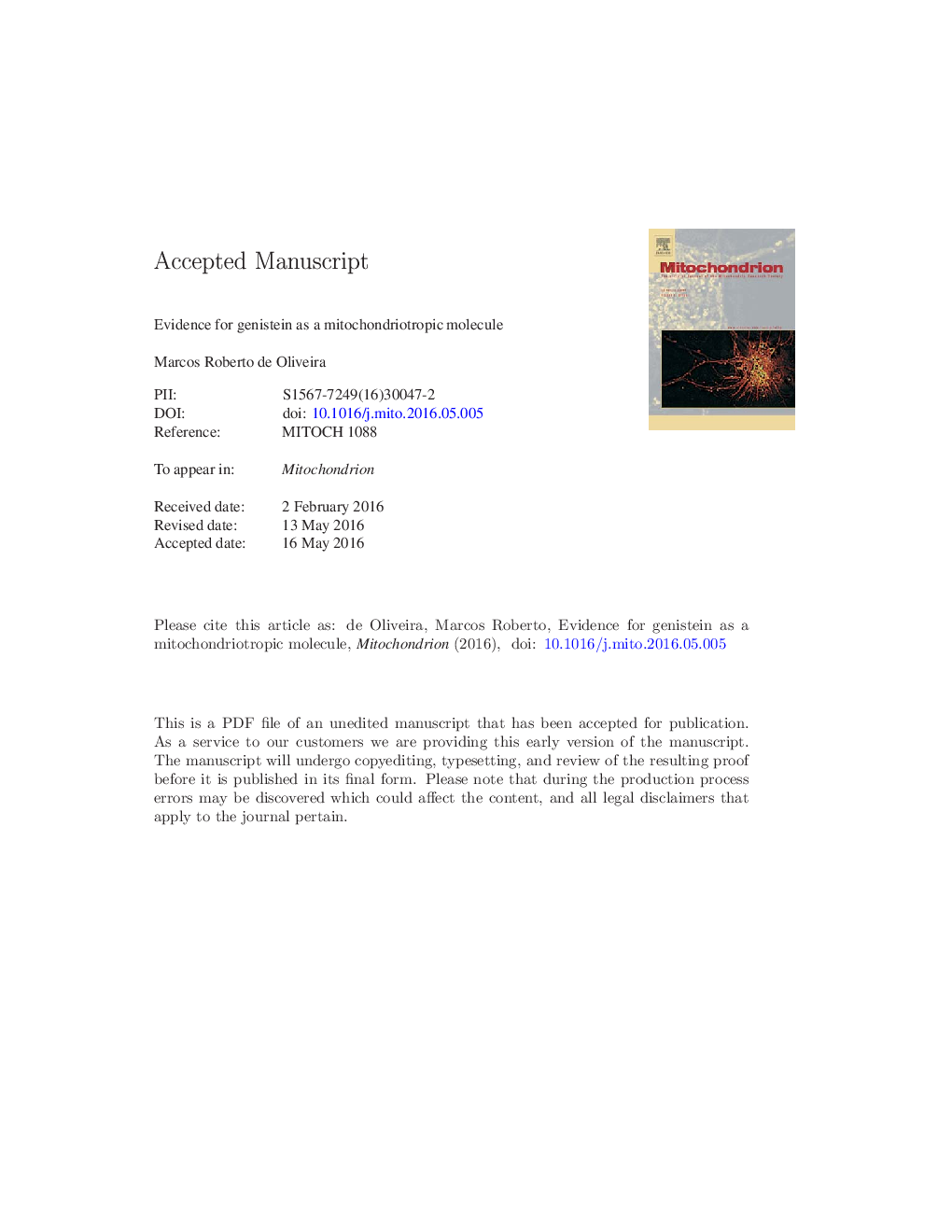| Article ID | Journal | Published Year | Pages | File Type |
|---|---|---|---|---|
| 8399042 | Mitochondrion | 2016 | 49 Pages |
Abstract
Genistein (4â²,5,7-trihydroxyisoflavone; C15H10O5), an isoflavone, has been investigated as an anti-cancer agent due to its ability to trigger cell death (both intrinsic and extrinsic apoptotic pathways) in different cancer cells in vitro and in vivo. Furthermore, genistein has been viewed as a mitochondriotropic molecule due to the direct effects this isoflavone induces in mitochondria, such as modulation of enzymatic activity of components of the oxidative phosphorylation system. Apoptosis triggering may also be mediated by genistein through activation of the mitochondria-dependent pathway by a mechanism associated with mitochondrial dysfunction (i.e., disruption of the mitochondrial membrane potential - MMP, release of cytochrome c, activation of the apoptosome, among others). Efforts have been made in order to elucidate how genistein coordinate these biochemical phenomena. Nonetheless, some areas of the mitochondria-associated research (mitochondrial biogenesis, redox biology of mitochondria, and mitochondria-associated bioenergetic parameters) need to be explored regarding the role of genistein as a mitochondria-targeted agent. This is a pharmacologically relevant issue due to the possibility of using genistein as a mitochondria-targeted drug in cases of cancer, neurodegeneration, cardiovascular, and endocrine disease, for example. The present review aims to describe, compare, and discuss relevant data about the effects of genistein upon mitochondria.
Keywords
PARPANTiNOS8-OHdGeNOSMPTPGCLMCAOMAOAMPKPGC-1αERαERβFADDPKCPKBHeme oxygenase-1BKAGRP78DR4DR5GADD153TRADDBCL2-associated agonist of cell deathtumor necrosis factor receptor type 1-associated DEATH domain proteinGrowth arrest and DNA damage-inducible proteinRPTCSirt1JnkCATMMPPI3KNrf2NF-κBNADPHGSHGPXHO-18-oxo-2′-deoxyguanosineAMP-activated protein kinasekeap1c-Jun N-terminal kinaseCu/Zn-superoxide dismutaseERK1/2Mn-SODp38 MAPKROSAntioxidantBongkrekic acidmitochondrial permeability transition poremiddle cerebral artery occlusionCSABADHuntington's diseaseadenine nucleotide translocatortumor necrosis factor-αApoptosisMitochondrial biogenesisRenal proximal tubule cellsendothelial nitric oxide synthaseCyclosporine Aendoplasmic reticulumFasLTNF-αnuclear factor-κBnuclear factor erythroid 2-related factor 2phosphoinositide-3-kinaseTRAILglutamate-cysteine ligasetumor necrosis factor-related apoptosis-inducing ligandGenisteinCu/Zn-SODMn-Superoxide dismutasemonoamine oxidaseMitochondrianicotinamide adenine dinucleotide phosphateMitochondrial membrane potentialglucose-regulated protein 78FAS-associated death domain proteinKelch-like ECH-associated protein 1protein kinase BProtein kinase Cp38 mitogen-activated protein kinasepoly (ADP-ribose) polymeraseCatalaseextracellular signal-regulated kinaseglutathione (reduced form)glutathione reductaseglutathione peroxidaseReactive oxygen speciesEstrogen receptor αEstrogen receptor βDeath receptor 4death receptor 5
Related Topics
Life Sciences
Biochemistry, Genetics and Molecular Biology
Biophysics
Authors
Marcos Roberto de Oliveira,
